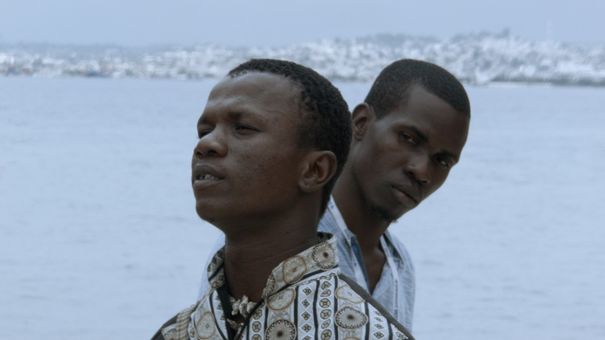The Line From Past To Present Is a Spiral
The Living and the Dead Ensemble’s Ouvertures advocates for a collective storytelling that transcends and transforms time and space
by Savina Petkova

© courtesy of The Living and the Dead Ensemble/Spectre Productions
In retrospect, it’s easier to structure the past in fragments, consequential entities which encapsulate singular meanings. National past laden with trauma, on the other hand, is highly susceptible to homogenous narratives based on who tells the story. Louis Henderson’s Ouvertures started as an exhibition project, and its film form challenges flat narratives using filmmaking practices reminiscent of Third cinema, combined with sensitive interrogations of Haitian culture. This reflective pilgrimage from France to Haiti does not leave the spectator’s mind to wander, as a narrator whispers the words of Toussaint Louverture – leader of the overlooked Haitian revolution – verbatim from his letters, intertwined with quotes from Aimé Césaire. The film’s poetic breath is felt throughout, in the brazen unscripted acting, in the immersed handheld camerawork, and in the ghostly presence of the past.
A film deeply embedded in its historical context, Ouvertures maps out a timeline of more than two centuries since the Haitian revolution (1791–1804). However, as a project written and conceived by the Haitian, French and UK collective The Living and the Dead Ensemble, the film suggests that the present could explicate the tangled relationship with the past. A tripartite structure splits the runtime in equal sections, each one themed and titled separately. The uniting thread is of a slam poetry performance of Édouard Glissant’s play “Monsieur Toussaint” after the protagonists have collectively translated it from French to Creole. The camera’s attention to written word in these sequences enhances the film’s critical understanding of language in reshaping history. In a similar way, the film’s beginning brings historical documents found in the National French Archives up close to the spectator’s look, the lines of handwriting brushing against the screen.
For a film that relies heavily on articulation, language difference, and explications of generational trauma, Ouvertures surprises with a tactile, elemental technique of historical retelling. Tracking shots bridge past and present, as they set the pace for history to unfold in the character’s dialogues. Shifts between celluloid and digital video make different use of natural light – often seen as if it radiates from human bodies – shadows, and interior lighting. Without conceding to a candid anthropological approach, the camera attends to the materiality of light and darkness in equal measure. The symbol of the spiral is a recurring one that emerges quite naturally in dialogue, it takes physical shape when drawn on the sand, and also becomes historically relevant alluding to Spiralism as an artistic movement and its role of decentering cultural canons.
While nature in its geographical specificity is a recurrent backdrop (the Jura mountains, forests, and the Caribbean ocean), events also spring out of cultural topoi such as Port-au-Prince’s streets and cemetery, and the aforementioned National Archives. A mixture rather than a juxtaposition consoles these two stratified locations denounces Western (and colonialist) binaries. Ouvertures advocates for a collective ethical engagement in storytelling, one that transcends and transforms time and space, as a spiral does with each swirl.

